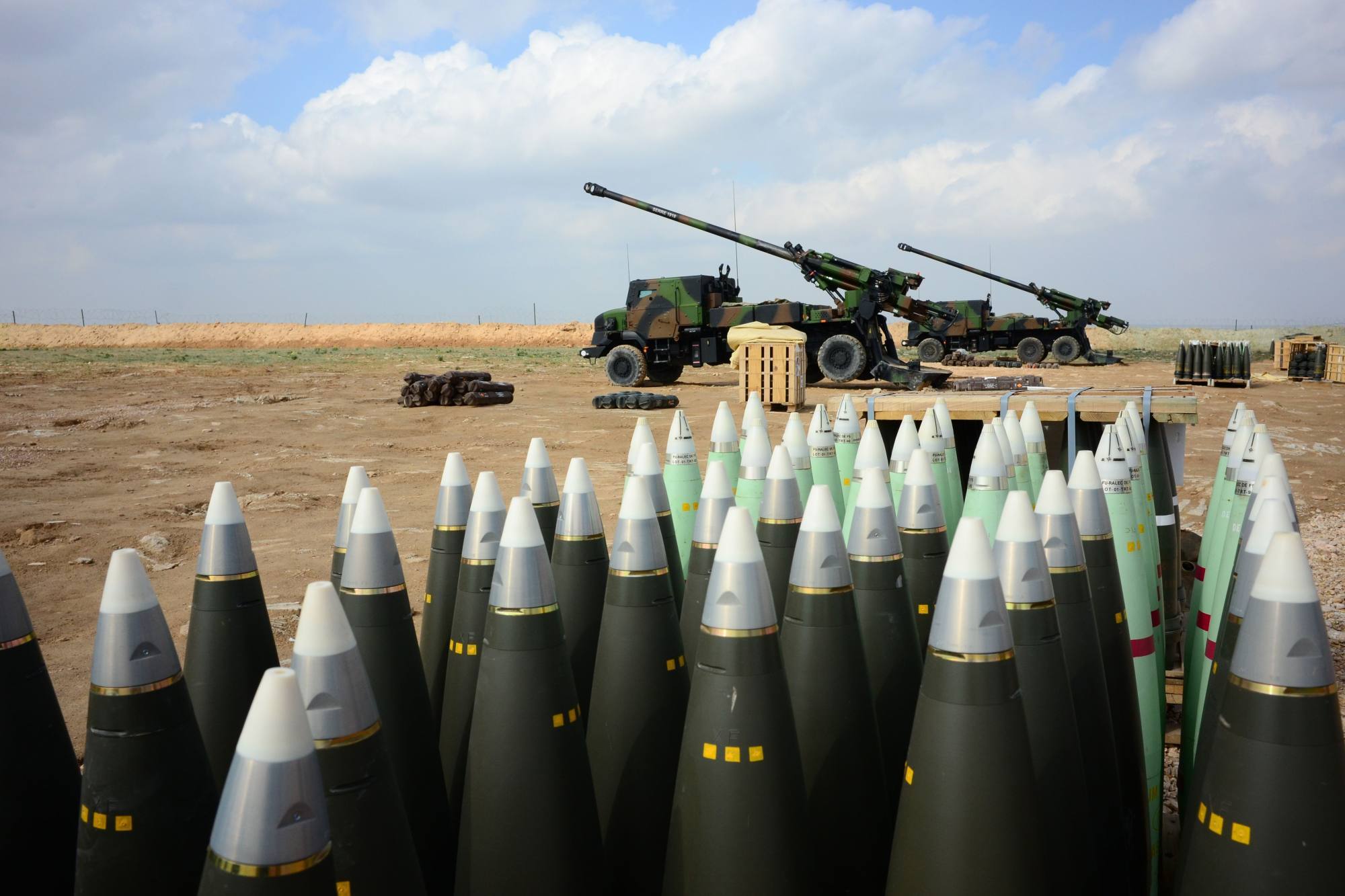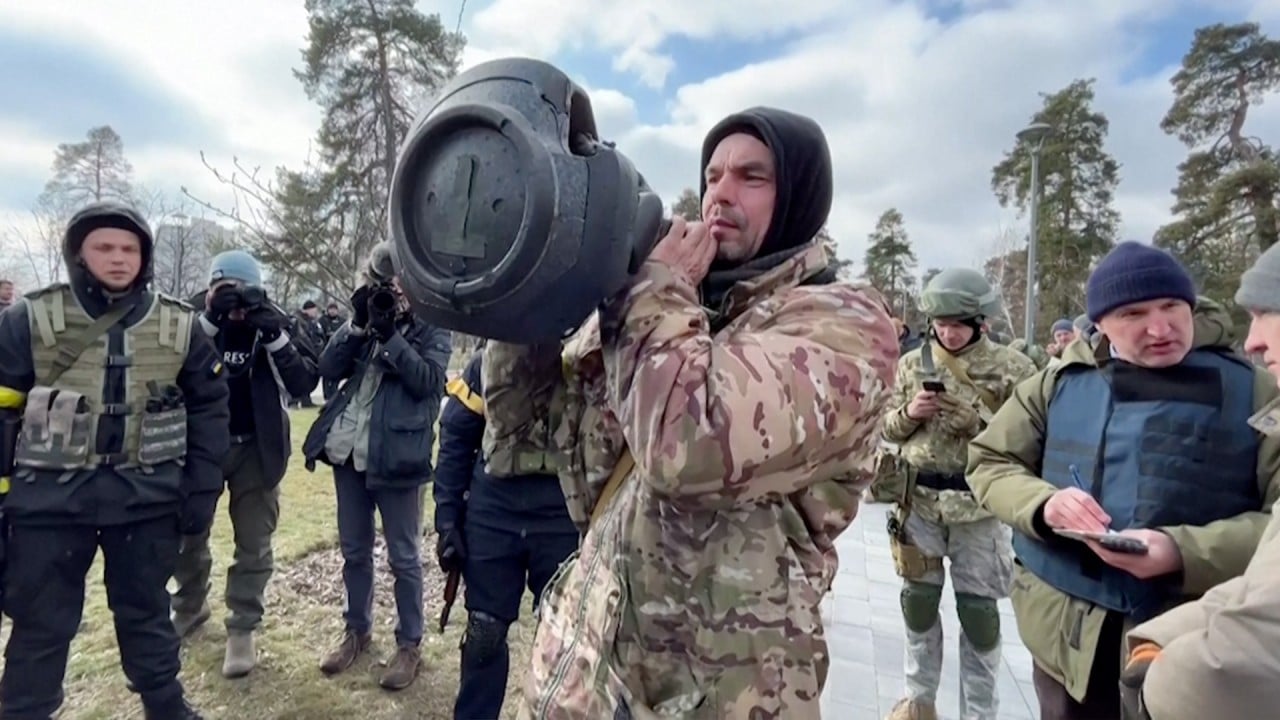
Logistic challenges may hinder Ukraine arms shipments from Western allies
- Ukrainian President Volodymyr Zelensky has demanded heavy arms from allies, on top of defensive weapons
- Some weaponry require a logistics chain to provide maintenance and spare parts in case of breakdowns, battle damage
Western governments have promised an array of heavy weapons to Ukraine as it battles a Russian invasion, but experts say a drawn-out conflict could see them run into complex logistical challenges, including for maintenance and ammunition.
Ukrainian President Volodymyr Zelensky has long demanded heavy arms on top of the defensive weapons flowing into the country from the West since Russia’s attack on February 24.
After abandoning its assault on capital Kyiv and other cities, Moscow’s offensive is now focusing on the Donbas region in Ukraine’s east and on its Black Sea coast.
“Self-propelled artillery, battle tanks and armoured vehicles can lend considerable punch to Ukraine’s forces, and even rebuild some capabilities eroded by two months of war,” said Leo Peria-Peigne of France’s Institute for International Relations (IFRI).
The “short-term capacity increase has priority” for now over “medium-term logistical considerations, which will nevertheless have to be looked at,” he added.
“Pretty much any and all defence equipment is welcome, but it will need to be well supported to ensure that Ukraine can keep it in the field,” agreed Nick Brown, director of Janes Defence Insight.
Existing links to Ukraine for delivering defensive weapons mean the new shipments are likely to flow smoothly, observers said.
And Ukraine’s backers have mostly avoided sending complex systems that would require months of training and intensive logistical support, like US-made Abrams main battle tanks.
Czech-supplied ex-Soviet armour is very similar to that already used by Ukraine, and crews could be trained on it within a few hours.
Meanwhile France is sending Caesar self-propelled howitzers, which have a reputation for “ease of use”, said Marc Chassillan, a military engineer specialising in tanks and armoured vehicles.
“You can learn how they work in a morning.”
Germany’s Gepard flak tanks are trickier, with their “sophisticated” and “highly demanding” radar-guided weapons system, Chassillan said – possibly requiring “several weeks” of training.
An option Berlin is still considering is the Marder infantry fighting vehicle, which should be easier to adopt for “seasoned Ukrainian troops who have been fighting since 2014,” Hans Lothar Domroese, a former senior German general, told public broadcaster WDR last week.
Once present in Ukraine and with trained crews, complex vehicles and equipment still need a whole logistics chain to provide maintenance and spare parts in case of breakdowns or battle damage.
“It’s a complex question, but maybe less so than in other countries without Ukraine’s industrial potential,” said IFRI expert Peria-Peigne, hailing its “infrastructure and considerable know-how in military vehicles and heavy industry”.
“If European manufacturers and Ukrainian soldiers can cooperate without issues, maintenance should follow along without any special hurdles,” he added.
Carlo Masala of Germany’s Military University in Munich said the important thing was to get weapons to the front and in position to help Ukrainian troops at a potentially vital moment.
“Train them to use them and send them to Ukraine. If they can use the Marders for three weeks, it’s better than nothing. If it breaks down, well, too bad,” he told broadcaster Deutsche Welle.
Depending on how long the conflict continues, ammunition supplies for the newly-delivered vehicles could become a problem.

“Everyone hopes the conflict will end quickly,” said Jean-Pierre Maulny of France’s Institute for International and Strategic Affaris (IRIS).
“But if it goes on longer, the risk of an ammunition shortage can’t be ruled out, especially for the Caesar cannons” – although they use the same 155-millimetre shells as artillery being sent by Australia, Canada and the United States.
Germany’s hope to deliver Marders to Ukraine is already hobbled by their dependence on Swiss-made ammunition.
Bern has vetoed supplying the munitions to Ukraine via Germany, based on its neutrality principle – something “far more dangerous in the short term than the replacement parts question,” said Peria-Peigne.
If the fighting gets still more intense, the weapons deliveries may not keep Kyiv’s forces in the fight for very long.
“If you add up what’s been announced … and compare it with the losses in the past 10 weeks in ammunition, material and so on, at the actual rate of attrition it could let them last a month and a half, no longer,” Chassillan warned.

.png?itok=arIb17P0)
